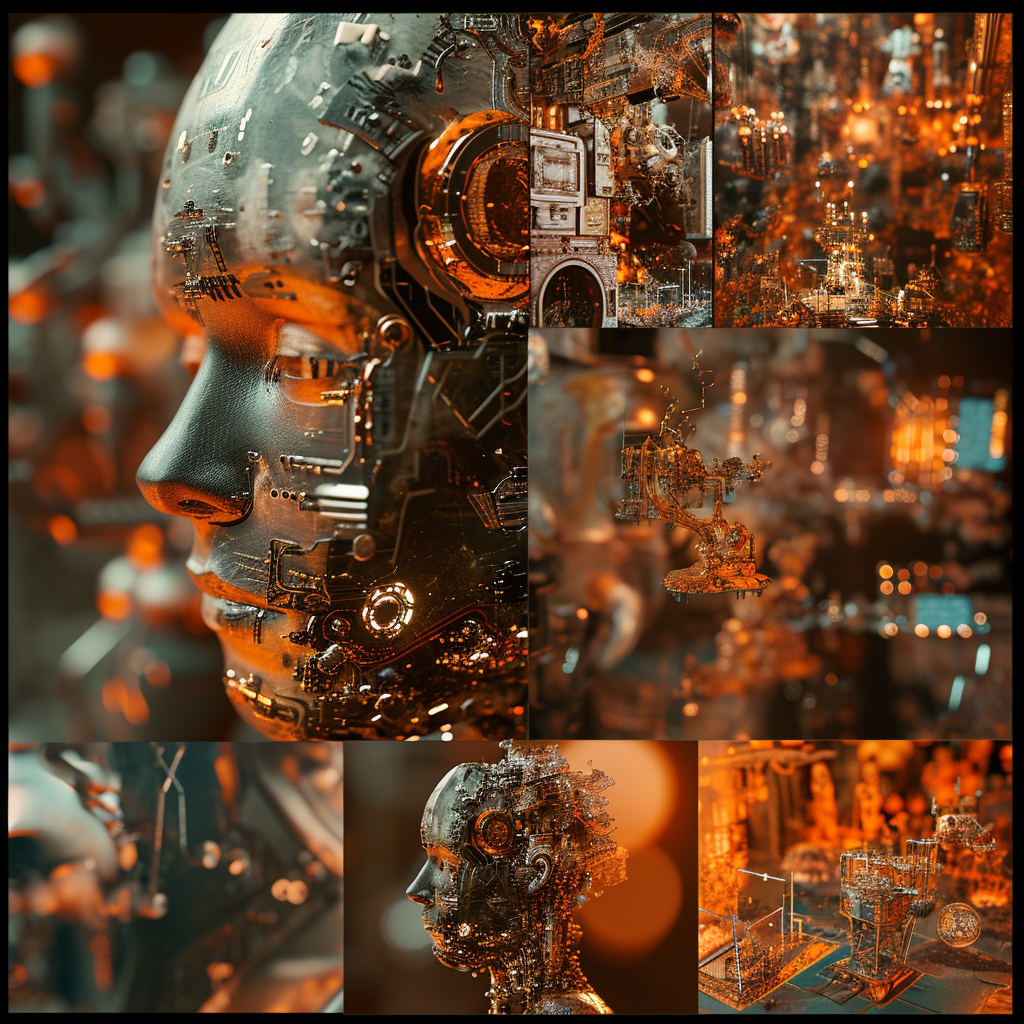Introduction
Artificial Intelligence (AI) is becoming a fundamental part of our daily lives. From predictive text and voice recognition to self-driving cars and personalised recommendations on streaming services, AI is everywhere. This blog post aims to explore the latest developments in AI and their potential impact on various industries.
Machine Learning and Data Analysis
One of the most significant developments in AI in recent years is the advancement of machine learning. This technology involves algorithms learning from data without being explicitly programmed.
- Supervised vs. Unsupervised Learning: Machine learning algorithms can be divided into two categories: supervised and unsupervised learning. In supervised learning, the algorithm is trained on a labeled dataset, where the correct output is already known. In unsupervised learning, the algorithm is trained on an unlabeled dataset and must identify patterns and relationships within the data on its own.
- Deep Learning: Deep learning is a subset of machine learning that involves the use of artificial neural networks. These networks consist of multiple layers of interconnected nodes, and they can learn and represent complex patterns within data. Deep learning has been particularly successful in areas such as image and speech recognition.
- Natural Language Processing: Natural language processing (NLP) is a field within AI that deals with the interaction between computers and human language. Machine learning algorithms can be used to analyze and understand natural language data, such as text or speech. NLP has many applications, including sentiment analysis, machine translation, and text summarization.
- Challenges and Limitations: While machine learning and data analysis have many potential applications, there are also challenges and limitations to consider. For example, machine learning algorithms require large amounts of high-quality data to train effectively, and they can be sensitive to biases and errors within the data. Additionally, machine learning models can be complex and difficult to interpret, making it challenging to understand how they make decisions.
- Ethics and Responsibility: As machine learning and data analysis become more widespread, there are also ethical and social considerations to take into account. For example, there are concerns about privacy, security, and bias in machine learning applications. It’s important to ensure that these technologies are developed and used responsibly, with consideration for their potential impacts on society.
Overall, machine learning and data analysis are powerful tools that have the potential to transform many industries and applications. By understanding the capabilities and limitations of these technologies, we can work towards responsible and effective use of machine learning and data analysis in the future.
Impact on Industries
The healthcare industry will particularly benefit from advancements in AI. Machine learning can identify patterns in a patient’s symptoms or genetic information, leading to early detection of diseases.
- Diagnostics: Machine learning algorithms can analyze vast amounts of medical data, such as medical images and genomic sequences, to identify patterns that may indicate the presence of a particular disease. This can lead to earlier and more accurate diagnoses, allowing for more effective treatment.
- Drug Discovery: AI can be used to accelerate drug discovery by analyzing vast amounts of data on drug molecules and their effects on various diseases. This can help identify promising drug candidates more quickly, reducing the time and cost of drug development.
- Personalized Medicine: AI can be used to develop personalized treatment plans based on a patient’s individual genetic makeup, lifestyle, and medical history. This can lead to more effective treatments with fewer side effects.
- Remote Monitoring: AI can be used to monitor patients remotely, allowing for more frequent and detailed monitoring of their health status. This can help identify potential issues earlier and reduce the need for hospitalization.
- Mental Health: AI can be used to analyze patterns in speech and language to detect signs of mental health conditions, such as depression and anxiety. This can help identify individuals who may be at risk and allow for earlier intervention.
Of course, there are also potential challenges and limitations to consider. For example, the use of AI in healthcare raises concerns about data privacy and security, as well as the potential for bias in algorithmic decision-making. It’s important to ensure that these technologies are developed and used responsibly, with consideration for their potential impacts on patients and healthcare providers.
Overall, the healthcare industry is just one example of how AI and machine learning can have a significant impact on various industries. By harnessing the power of these technologies, we can unlock new possibilities for innovation, efficiency, and improved outcomes.
Conclusion
The future of AI is unfolding before our eyes, and the possibilities are endless. As technology continues to evolve, so too will the capabilities of artificial intelligence. Whether it’s enhancing patient care in healthcare or streamlining operations in manufacturing, AI is set to change the world.
We encourage readers to leave comments and subscribe to our newsletter. Stay informed about the latest developments in AI and their potential impact on your industry.





